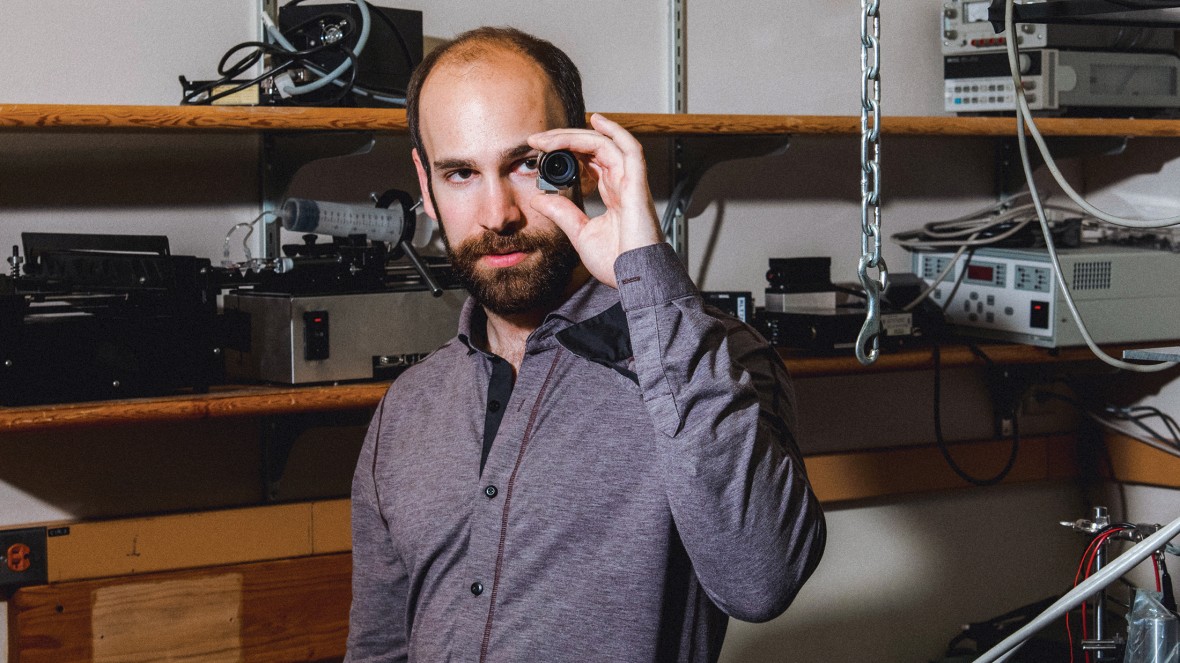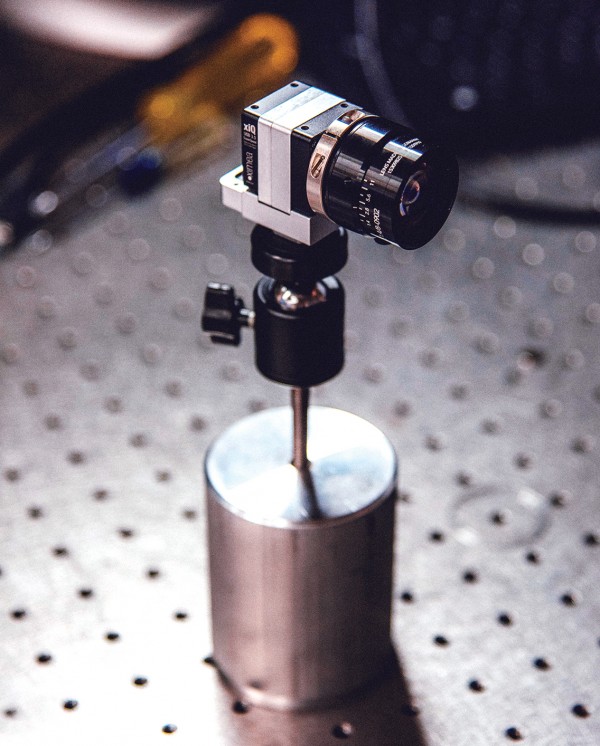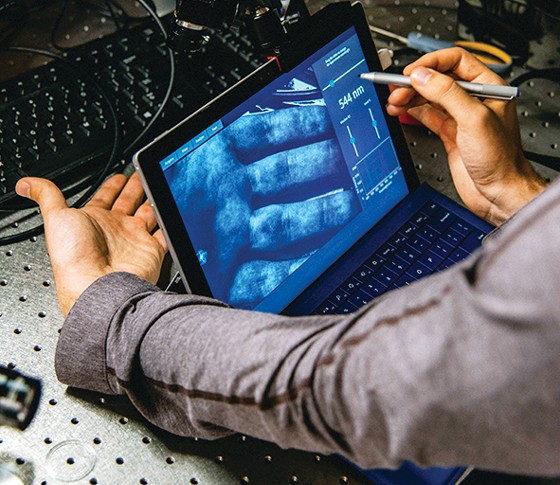
` Alex Hegyi, 29
PARC
A new type of camera could let smartphones find counterfeit drugs or spot the ripest peach.
No matter how good your smartphone camera is, it can show you only a fraction of the detail Alex Hegyi can with the one he’s built at Xerox’s PARC in Palo Alto, California. That’s because Hegyi’s camera also records parts of the spectrum of light that you can’t see.
Since Hegyi’s camera logs a wider range of wavelengths, it can be used for everything from checking produce at the grocery store (fruits increasingly absorb certain wavelengths as they ripen) to spotting counterfeit drugs (the real ones reflect a distinctive pattern). In the near future, Hegyi hopes, his technology can be added to smartphone cameras, so anyone can make and use apps that harness so-called hyperspectral imaging.
Such systems have been around for years, but they have been big and expensive, limiting them to non-consumer applications like surveillance and quality control for food and drugs. His version, which is much simpler and more compact, relies on a black-and-white USB camera. He adds a liquid crystal cell, set between polarizing filters, in front of its image sensor. He also created software, which he runs on a connected tablet computer, to process the images.


Three to five years from now, Hegyi thinks, your phone could be revealing information that isn’t available in the visible spectrum of light. With such a tool, he says, “consumers themselves don’t have to know anything about wavelengths—they can take a picture and the display can say ‘counterfeit’ or ‘real.’” Or it might say the peach is ripe.
—Rachel Metz
